A Night at the Palace with ‘United Queendom’ (The NoPro Review)
The show is a glittering jewel in Les Enfants Terribles’ crown
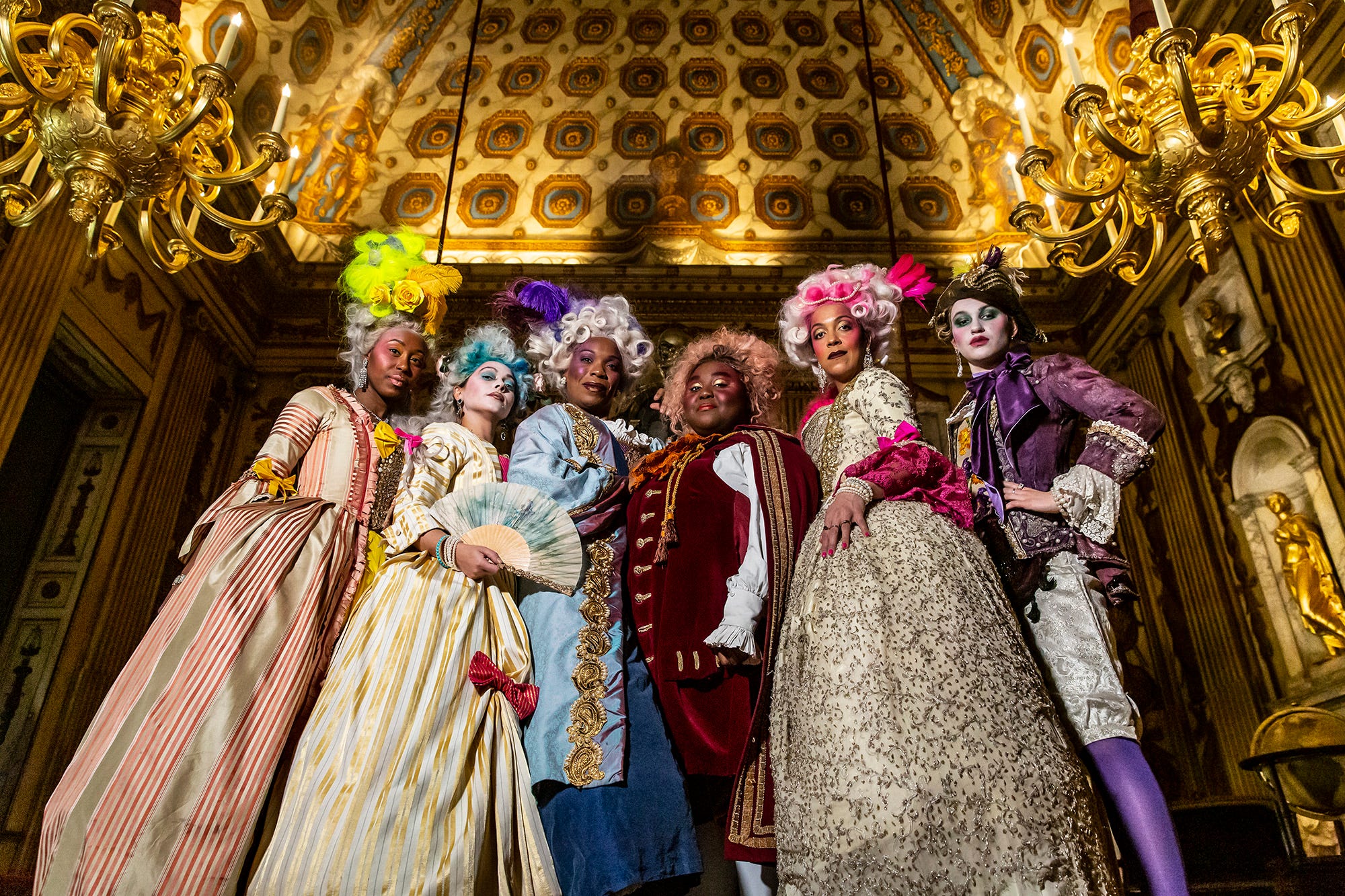

The Royal Borough of Kensington is quiet on a Monday night, though as I step out of Queensgate Station and take in the view, I begin to suspect that the neighborhood is never very lively: a high fence surrounding the royal gardens runs along the far side of the road and very few nightlife options are open. It doesn’t look like anything exciting is ramping up to happen near here, but just steps from the station I see a representative of production company Les Enfants Terribles wearing a black hooded sweatshirt with the words “United Queendom” blazoned across the front in a shock of neon pink; she’s there to check guests in and bestow upon us a wristband in the same vibrant colour which will grant us entry into the social event of the season: the birthday party for His Majesty King George the Second in the year of our Lord 1734.
Les Enfants Terribles cut their last large swath through London back in 2018 with Alice’s Adventures Underground, a show born in the Waterloo Vaults which grew to be so successful that it has since transferred to Shanghai (a city which welcomes immersive theatre so much that it also boasts an iteration of Punchdrunk’s Sleep No More). This new production, United Queendom, is specially commissioned by Historic Royal Palaces and promises to be another delicious fall down the rabbit hole.
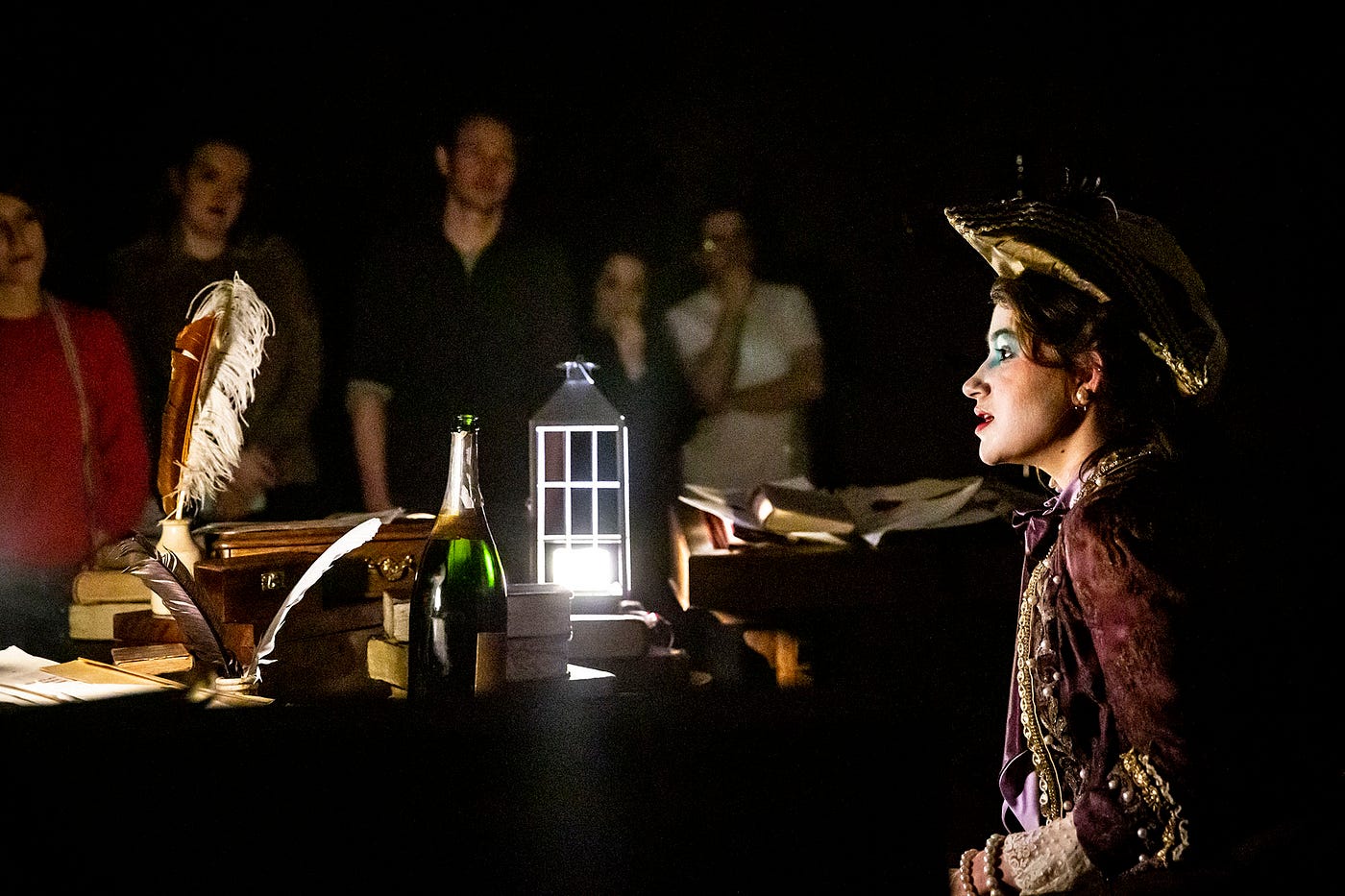
I’m a palace dork. As an ex-pat American now living on a continent built on monarchies, I’m enchanted by the architecture and furnishings of castles, and the idea that what should be museums are actually functional residences. I’ve toured Kensington Palace before by day, but I’ve never had the opportunity to tour any of England’s royal households at night. As I walk through the deserted and spookily-dark grounds (my spectacular luck to have arrived alone with no other guests making their way in at this moment), I marvel at the backyard view of the glittering private residences glowing above the tree line on the far side of the park. I think — not for the first time during the course of the evening — that the access to the grounds and palace at night in quasi-solitude would be worth the price of admission alone, performance notwithstanding.
The guests are directed and corralled in the palace cafe-cum-gift-shop prior to the performance, which is likely a choice of necessity rather than design. While it’s a far cry from a portal between worlds meant to transport us from 2020 to the Georgian age, portions of the palace are a working royal residence and after the venue closes to visitors in the early evening there is likely no other safe place to allow us to gather without requiring armed security on standby. We are advised to check all phones, bags, and coats, as photos are prohibited in the main building and the space may get too warm to carry around any hindrances. After a long winter day of freezing rain and occasional hailstones(!) we’re all too pleased to be able to shed our layers and enjoy the heat.
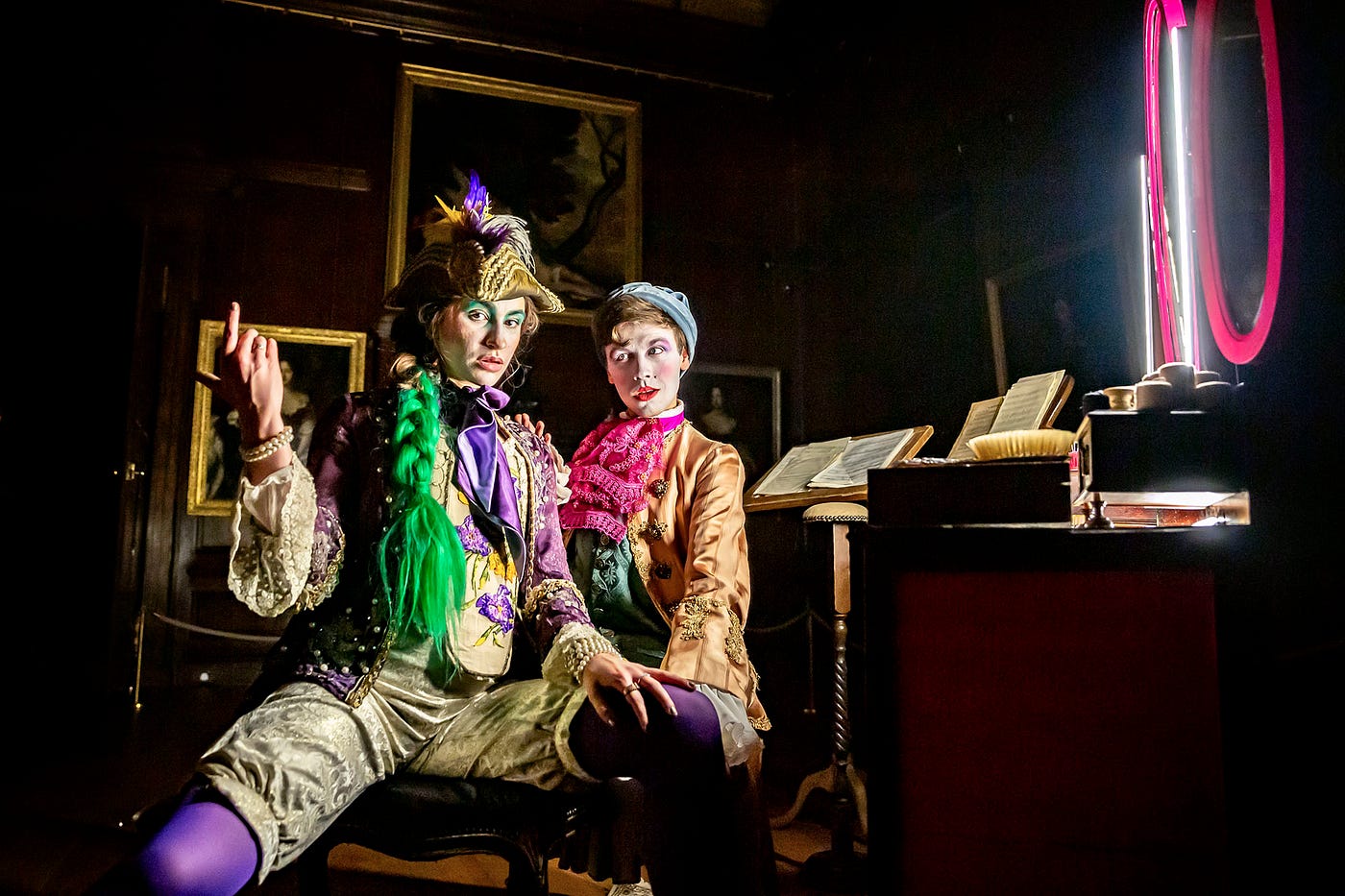
Soon, we’re met by a woman kitted out in what can only be described as a royal servant’s garb by way of disco. Slashes of anachronistic colored fabrics, facepaint, and frizzy dyed bouffants are a running design theme throughout the evening, and, as our guide advises us how to be on our best behavior around the guests of honor, I admire her heavily-customized clothing and look forward to seeing the top blow off on the royals’ sartorial design. She introduces herself to us as the “necessary woman” (as in, the woman who tends to the “necessary,” or bathroom — effectively she is the royal toilet attendant), which is, in fact, one of the highest ranking positions in the household, as she is one of the only people who spends any time in true privacy with the royals, in a position typically reserved only for men.
Once we get inside the reception court and are surrounded by painted courtiers decked out in festoons of gauzy layers twinkling with LED lights, it’s clear that while Les Enfants Terribles aren’t permitted to make any changes to the actual building or its furnishings, they make an awful lot of good with what they got: utilizing the palace’s pre-set display monitors with videos of the members of court, the addition of bright pink columns and neon-lit 18th-century-inspired set pieces interspersed throughout the space, the occasional luscious artistic installation (such as a human-size tunnel built of handwritten letters), and music piping throughout via subtly-placed speakers. I feel like I’ve fallen into a cross between the films Marie Antoinette and The Favourite.
Get Shelley Snyder’s stories in your inbox
Join Medium for free to get updates from this writer.
SubscribeSubscribe
The reception hall is where we’re tactfully divided into two groups: some of us are slipped a gilded envelope which contains a pass to the exclusive & private areas of the palace as personal guests of Queen Caroline, and the rest are kept back as the party to the king’s mistress Henrietta Howard. I notice there’s little reasoning behind the issuing of envelopes other than who happens to be standing near the courtier slipping them out, and, when I hold mine aloft as I pass through the doors to the private apartments, I notice that a few uninitiated guests push their way in with our group and aren’t stopped. (So much for exclusivity.)
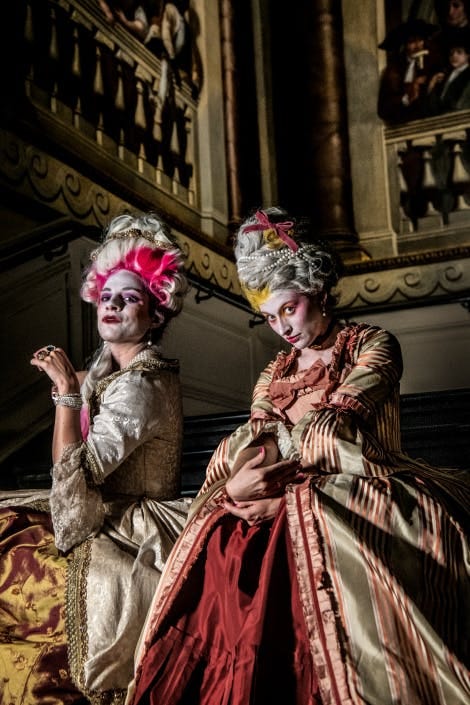
The story is a driven portrayal of the dynamic between the queen and her husband’s favorite and long-serving mistress, two women in the court who were brilliant powerhouses in their own right and found a way to better both their own and the kingdom’s interests by balancing each other’s influence. While at times the storyline can feel heavy-handed with feminist tones, it’s a suitable message for the intended audience of international tourists in the current political climate. The men of the court consistently downplay the importance Queen Caroline plays in the kingdom as our Necessary Woman (perhaps now a subtle play on words as a “token female” in a male-dominated job?) insists that the private history between the two protagonists “was written by a man and he wasn’t even there.” At times we are even regaled by a thickly accented and dissentious breeches-wearing Countess of Hertford played by the delightful Lucy Reynolds, who, via overtly Hamilton-esque rap soliloquies, avails us of Queen Caroline’s many achievements — not least of which I learn is her insistence on the use of vaccines. Les Enfants Terribles clearly sees no reason not to hawk their own wordsmith where there’s pantaloons involved.
Throughout the evening the audience is kept on separate tracks and therefore experience different storylines, but there are occasions where the two groups overlap into the same vignette. Having attended Alice’s Adventures Underground I note similarities between the two: how Les Enfants Terribles enjoys meeting two audience groups on opposites sides of a scene staged in traverse, and how a character will exit in the middle of a scene with one group only to burst organically into a scene with another.
At immersive shows there’s always an audience member who wants a little too much personal attention and engages a bit too loudly and too often, but the cast deftly deals with these interruptions. The palace is full of characters, all of which are notable and excellent at lending a personal touch to their interactions with audience members, but I’m especially charmed by actor Richard Holt’s portrayal of the curmudgeonly Duke of Newcastle. I find myself gravitating toward him wherever possible, genuinely trying to contain snickers as he insists on cantankerously bloviating about the majesty of the king and the subservience of woman-kind. Holt provides a sharp and welcome comedic foil to the important but occasionally blunt message of the performance.
While there’s very little audience agency apart from standing in the right place at the beginning to be directed along one of two tracks, once I fight off the urge to make any choices or fashion my own luck I find that it’s surprisingly easy to just enjoy the ride. There are occasional invitations to join in (be it bowing, chatting, or even dancing) but engaging is not required to experience the work; voyeurs welcomed.
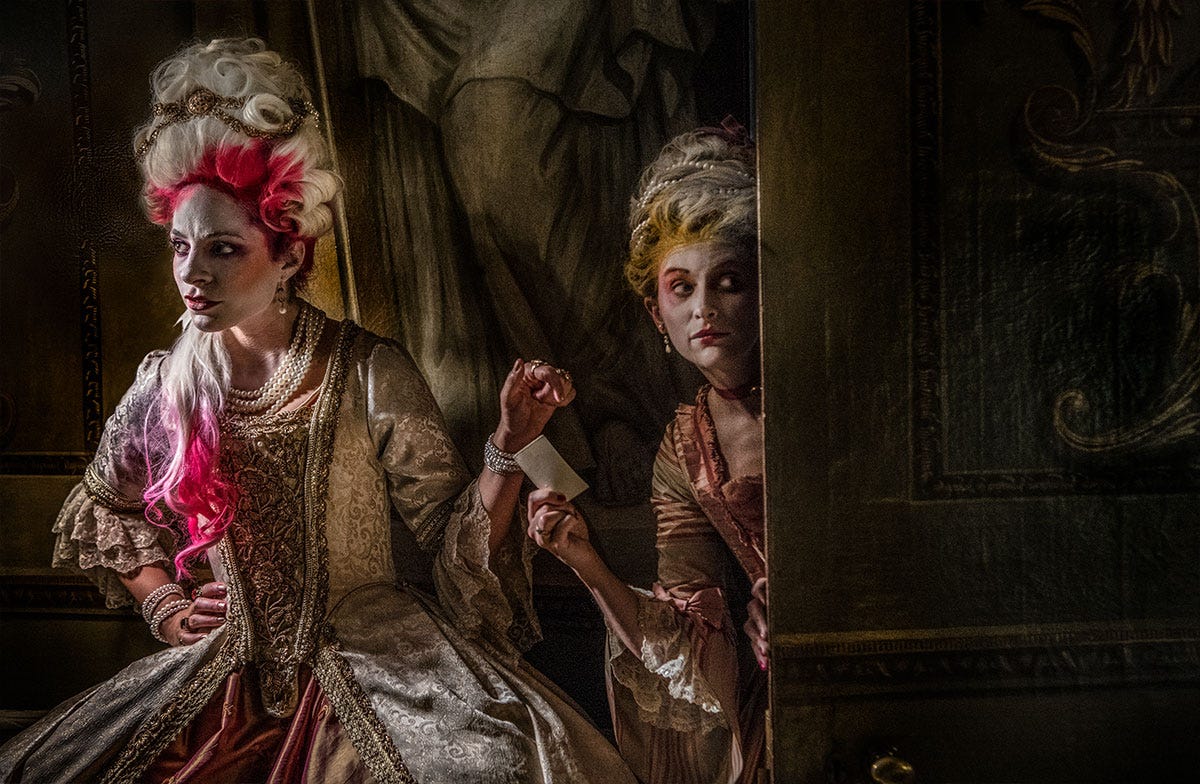
United Queendom was commissioned as a site-responsive piece by Historic Royal Palaces and it’s easy to guess that their goal was not to create a lavish immersive world but to boost interest and foot traffic. It’s a living history play that we get to walk through and occasionally interact with characters who typically only exist in books or on the far side of a proscenium’s fourth wall. Theatre creators sometimes believe that in order to approach the immersive standards of the holy Punchdrunk we must build sprawling, elaborate, awe-inspiring sets, but when a historic preservation site agrees to collaborate, half the battle is already won. No amount of glittering-but-spackled facade or painted stage muslin can approach the environmental effect of watching gilded courtiers move through the actual majestic halls that they once trod centuries ago, and then getting to follow them.
A candy-colored neon promenade through the hallowed halls of the British monarchy, we can only hope that United Queendom’s instant success (the run was sold out shortly following the press night) will spur Historic Royal Palaces to extend the reign once the current public health crisis has passed. Long live Les Enfants Terribles.
United Queendom has concluded.
NoPro is a labor of love made possible by our generous Patreon backers. Join them today!
In addition to the No Proscenium web site, our podcast, and our newsletters, you can find NoPro on Twitter, Facebook, YouTube, Instagram, in the Facebook community Everything Immersive, and on our Slack forum.
Office facilities provided by Thymele Arts, in Los Angeles, CA.